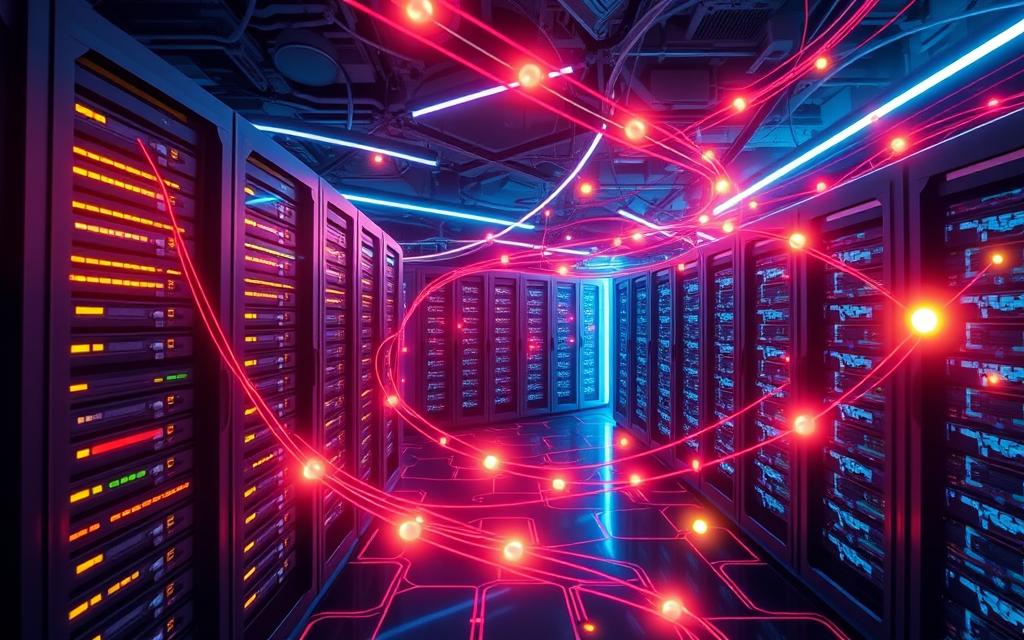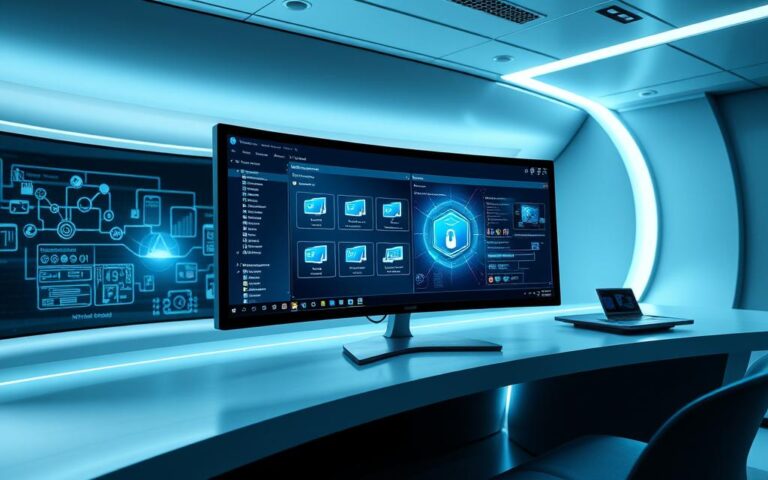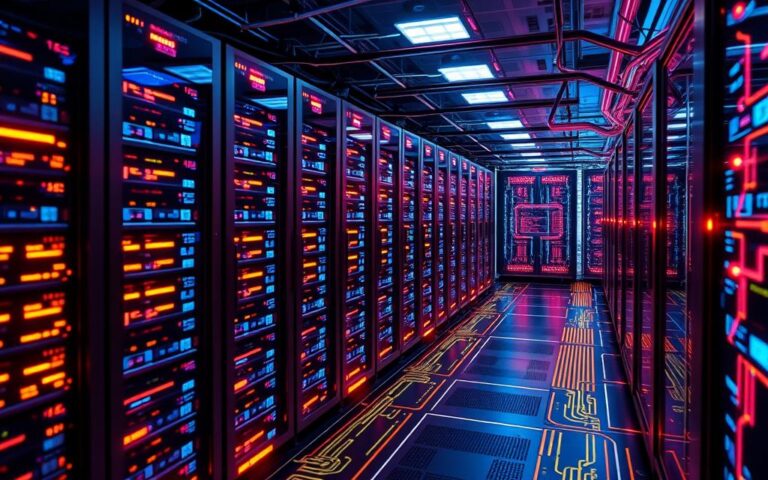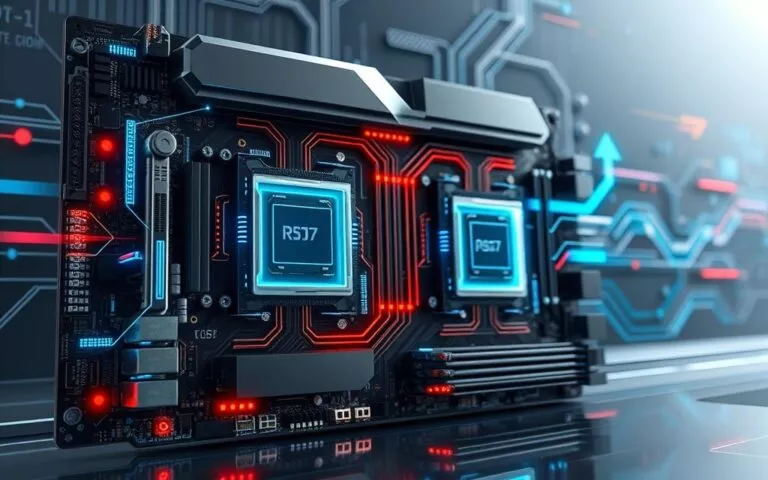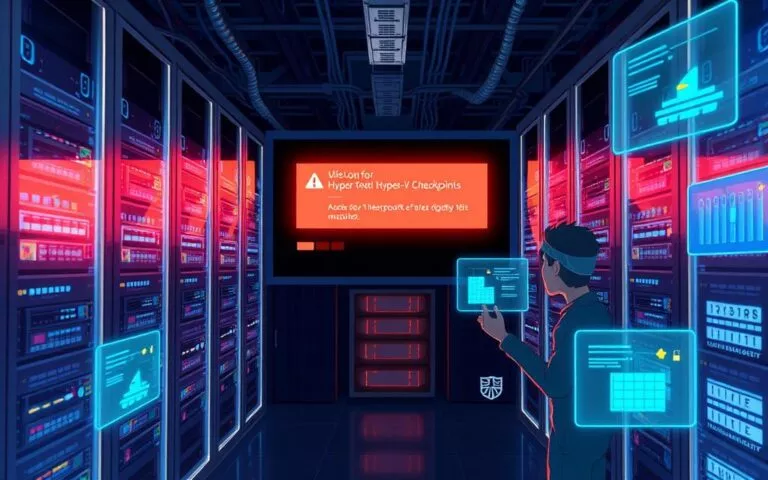Benefits of Hyper-Converged Compute Systems
Organisations are increasingly using hyper-converged compute systems for better IT infrastructure. These systems combine computing, storage, and networking into a single platform. This boosts efficiency and improves user experience.
The key advantage of HCI benefits is its simplicity in deployment. By choosing a single vendor and using pre-integrated components, there’s no need to check if different systems work together. This not only reduces complexity but also cuts costs in IT.
Sangfor HCI allows businesses to update their operations while keeping control. This tech provides a scalable and flexible infrastructure. It lets organisations grow as needed. As a result, more companies are choosing hyper-converged solutions, driving up demand.
Understanding Hyper-Converged Compute Systems
Organisations today are on a quest for digital transformation. Hyper-converged infrastructure (HCI) offers a key solution. It brings together multiple functions into one simple system. This makes operations more efficient and effective. Understanding HCI’s basics and its essential parts is crucial.
What is Hyper-Converged Infrastructure (HCI)?
HCI is about combining storage, computing, and networking into one system. Before HCI, data centres used different pieces of hardware for each function. HCI changes this by using virtual machines to simplify these tasks. This makes managing the system easier and cuts costs, all while boosting performance.
Core Components of HCI
The core parts of hyper-converged infrastructure are key to its success. Important pieces include:
- Compute Resources: Uses standard x86 hardware to run programs well.
- Storage Management: Brings together storage needs, removing the need for extra devices.
- Networking: Makes communication between resources simpler, making management easier.
- Virtualisation: Spreads resources and applications over a virtual space for better flexibility.
- Management Software: Offers a unified way to control all elements of HCI, making things more streamlined.
Modern HCI uses software-defined technologies like Nutanix and Dell EMC. These show how flexible and effective the current systems are. Moving from old converged infrastructure, HCI makes integration and optimisation easier. It helps organisations adapt to new needs and demands.
Key Benefits of Hyper-Converged Compute
Hyper-converged compute systems change how organisations handle their IT. They merge compute, storage, and network functions, making operations smoother. These advantages make IT simpler to manage and more cost-effective, helping businesses stay ahead.
Simplified Management
Hyper-converged infrastructure (HCI) makes IT management easier. It combines different functions into one system. So, IT staff can manage things without the hassle of dealing with separate components.
HCI lets businesses set up applications and infrastructure fast. It means they can adapt quickly to new business demands. Fewer IT staff are needed, which helps businesses use their resources better. This tech also helps improve disaster recovery, making firms more robust.
Cost Efficiency and Reduced Overhead
Switching to HCI saves money. It does this by replacing many old systems with one HCI cluster. This cuts down on hardware and energy costs.
This also means lower IT costs, as less staff and storage are needed. It lets businesses use resources more wisely, speeding up how fast they can start using new applications. This means more money for innovation and growth.
Adopting hyper-converged systems gives businesses edge over their rivals. Using systems like HPE’s SimpliVity boosts these benefits. This sets them up for a successful future.
Enhanced Scalability and Flexibility
The digital world is always changing. So, having scalable HCI and flexible IT systems is very important. Hyper-Converged Infrastructure (HCI) makes managing things simpler. It also makes it easier for businesses to adapt. We will explore how it allows for quick addition of resources and supports growth with its structure.
Rapid Resource Provisioning
HCI‘s quick resource adding feature is key for data centres. Businesses can adapt fast to new needs without waiting too long, unlike older IT systems. With just one interface, IT teams can control everything and fix problems fast. This keeps things simple. Adding more nodes is also easy and doesn’t stop daily work. So, HCI lets businesses grow without risking downtime.
Modular Architecture for Growth
The modular setup of HCI gives businesses the flexibility they need today. If a company needs more power, they can just add more nodes bit by bit. This saves a lot of money upfront. This approach also adjusts well to changing workloads, cutting costs. By managing data and resources better, HCI reduces delays and improves speed. This setup is great for businesses looking to stay current and strong in the future.

Improved Performance and Agility
In today’s fast-changing digital world, businesses need tools that boost performance and agility in complex systems. Efficient data access is key for better IT performance. It helps companies quickly adapt to new demands and shifts in the market.
Optimised Data Access and Latency Reduction
Nutanix’s technology makes data easier to access and reduces delays. This means businesses can offer better services and use their resources wisely. Using AI and machine learning, they can spot and fix issues faster.
Studies show that Nutanix’s approach works well. Companies using it saw a 356% return on investment in five years. This shows hyper-converged systems can boost performance while cutting costs and hardware needs.
Hyper-converged systems are great as they grow with your needs, avoiding unnecessary expenses. They offer a smart “pay-as-you-grow” plan. This way, companies can easily handle changes in their needs while staying efficient and saving money.
| Performance Metric | Traditional Infrastructure | Hyper-Converged Infrastructure |
|---|---|---|
| Return on Investment (5 Years) | Standard Industry Average | 356% |
| Latency Reduction | Higher | Significantly Lower |
| Cost Savings (Total Cost of Ownership) | Difficult to Measure | 43% Savings Achieved |
| Workload Performance Improvement | Moderate | High |
| Scalability Flexibility | Limited | Highly Flexible |
Choosing hyper-converged infrastructure is smart for businesses looking at today and tomorrow. It prepares them to grow and take on future tech changes.
Security and Data Protection Features
In the world of IT, strong security and data protection are key. HCI stands out by providing many security features and efficient disaster recovery options. These meet the needs of modern organisations well.
Integrated Security Measures
HCI helps keep sensitive data safe with its comprehensive security features. By building security into its structure, HCI makes fewer openings for threats compared to old systems. It focuses on several important areas:
- Centralised Management: A single platform makes it easy for IT teams to watch and handle security measures.
- Built-in Redundancy: By having backup paths, it keeps data safe even if something unexpected happens.
- Regular Updates: Thanks to its software approach, security updates are quick, keeping protection high without stopping work.
Streamlined Disaster Recovery Solutions
Being ready for disasters is essential for keeping businesses running. HCI shines here with its automated recovery steps and built-in tools. Here are some key features:
- Snapshots: By taking regular snapshots, data can be brought back quickly, which lowers the chance of losing important information.
- Replication: Data is copied safely to different sites, making it available even if the main site goes down.
- Enhanced Recovery Time Objectives (RTO): The efficient processes cut down RTO, helping organisations get back to work quickly after problems occur.
Using strong data protection in HCI ensures a system that can handle challenges while keeping valuable data safe. The mix of security and disaster recovery shows why more organisations choose HCI.
Conclusion
In conclusion, adopting hyper-converged infrastructure offers many benefits. It makes management simpler and cuts down on costs. These savings include less spending on hardware, power, and cooling. This leads to a lower total cost of ownership.
The future of IT looks bright with HCI, as it’s built for easy growth. Organisations can add more resources without big problems. This helps businesses quickly adjust to new demands, keeping essential applications running smoothly.
Also, with rising cyber threats, HCI’s security is getting stronger. It’s expected to include AI-driven threat detection. This will greatly improve how data is protected. By choosing hyper-converged solutions, companies can make their IT better. This also makes them more flexible and stronger in the digital world.
FAQ
What is Hyper-Converged Infrastructure (HCI)?
Hyper-Converged Infrastructure (HCI) combines computing, storage, and networking into one managed platform. This gives organisations better control and the ability to scale up. It makes IT operations smoother and updates tech systems.
What are the core components of HCI?
HCI’s main parts are software-defined storage, computing resources, and networks that are virtual. These parts work together well. They make IT environments more united and work better.
How does HCI simplify management?
HCI makes managing IT simpler by bringing different tasks into one place. This makes it easier to watch over, keep up, and control resources. So, operations work better and things are less complicated.
What is the impact of HCI on IT costs?
HCI lowers overhead costs because it reduces the need for separate storage and servers. This leads to cost savings and less spending on IT over time.
How does HCI enhance scalability?
HCI’s design lets organisations grow their resources quickly when needed, without big interruptions. This ability to change fast is key in the fast-moving digital world.
What are the performance benefits of HCI?
HCI boosts performance by making data access quicker and cutting down on delay. This results in faster app response times and a nimble system. It is vital for staying ahead in the market.
How does HCI ensure security and data protection?
HCI includes security features and quick disaster recovery plans. This means organisations can protect their data and recover fast if something goes wrong.
What future implications does HCI have for IT infrastructure?
The future of IT will lean more on hyper-converged solutions. They provide the flexibility, efficiency, and new ideas needed to keep up with changing business and tech needs.

